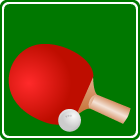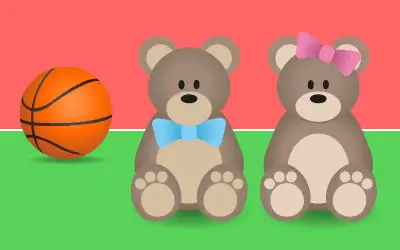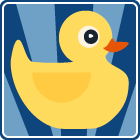


Click the answer boxes to hear the answer for each box. You must answer 5 questions correctly to complete the game
Game: MIX AND MATCH
Aim: Drag question blocks to answer boxes
Method:
Drag the question block over the right answer box to tidy up the play room. Points are added and taken away automatically.
Click the answer boxes to hear the answer for each box. You must answer 5 questions correctly to complete the game

anonymous 🐶🐶🐶
"Two variables"
MIX AND MATCH game to practice
'Identify improper fractions' for 6th grade
6th grade / Number / Fractions / Fraction basics / Identify improper fractions
Identify improper fractions
What is an improper fraction?
An improper fraction is a fraction where the numerator (the number on the top) is greater than or equal to the denominator. Another name for improper fraction is top-heavy fraction.
Mixed fractions and improper fractions
An improper fraction like 3/2 can be converted to a mixed fraction by dividing the numerator by the denominator and expressing the remainder as a fraction. Converting the improper fraction 5/2 to a mixed fraction gives 2½.
A mixed fraction like 1½ can be converted to an improper fraction. To convert a mixed fraction to an improper fraction, multiply the denominator of the fraction part by the whole number, then add the numerator. Put the total over the denominator to create the improper fraction. Converting the mixed fraction 1½ to an improper fraction gives:
(2 x 1) + 1 / 2 = 3/2 (three over two).
With our Mix and match math game you will be practicing the topic "Identify improper fractions" from 6th grade / Number / Fractions / Fractions. The math in this game consists of 16 questions that ask you to identify the fraction or fractions that are improper fractions.
6th grade : Fractions
Sections
5 sub categories:
- Fraction basics
- Add fractions
- Subtract fractions
- Multiply fractions
- Divide fractions
In Year 7 in the UK, students typically continue to build upon their understanding of fractions, which they started developing in earlier grades. Here's an overview of key concepts related to fractions that are commonly taught in Year 7:
Understanding Fractions: Students learn that fractions represent parts of a whole or a group. They understand that a fraction consists of a numerator (the number above the fraction line) and a denominator (the number below the fraction line). The numerator represents the number of parts being considered, while the denominator represents the total number of equal parts that make up a whole.
Equivalent Fractions: Students explore equivalent fractions, which are different fractions that represent the same value. They learn that equivalent fractions can be obtained by multiplying or dividing both the numerator and the denominator by the same number. For example, 1/2 is equivalent to 2/4, 3/6, and so on.
Comparing and Ordering Fractions: Students learn to compare fractions and order them from least to greatest or greatest to least. They understand that when fractions have the same denominator, the one with the larger numerator is greater. When fractions have different denominators, they convert them to equivalent fractions with a common denominator to compare.
Adding and Subtracting Fractions: Students begin to add and subtract fractions with the same denominator (for example, 1/4 + 2/4). They also learn to add or subtract fractions with different denominators by finding a common denominator and then adjusting the numerators accordingly.
Multiplying and Dividing Fractions: Students explore multiplication and division of fractions. They learn to multiply fractions by multiplying the numerators together and the denominators together. For division, they learn to invert the second fraction and multiply. For example, to divide 1/4 by 1/2, you multiply by the reciprocal, which is 2/1.
Fractions in Real-Life Contexts: Students apply their understanding of fractions to real-life situations, such as measurements, recipes, and problem-solving scenarios. They learn to interpret and solve word problems involving fractions.
In this game we are in a room with lots of toys - and the room needs clearing up - you need to put the play blocks back in the right boxes to tidy the room and win the game...but which is the right box for each block? Well, you can work that out by comparing the question on the block with the math answer on each of the boxes - you should drag the question block into the box whose math answer matches the picture question.

You can listen to the spoken math answer by clicking on the individual boxes. There are 5 blocks to clear up - but if you put them in the wrong boxes, there will be more... Anyway, tidy is good and practicing math is better so start now and see how you get on...
This game reinforces the math you learned or revised in the lesson by asking you to match each question to the correct answer. If you are older you may not like the childish reference to toys, but don't worry - there are other games to play, and who knows - you might like a trip down memory lane?
UXO * Duck shoot * The frog flies * Pong * Cat and mouse * The beetle and the bee
Rock fall * Four in a row * Sow grow * Choose or lose * Mix and match





How to play Mix and match to practice
'Identify improper fractions' for 6th grade

There are 5 blocks that need putting away to tidy the play room. Drag (they are heavy...) the blocks to the correct boxes.
- Click on "PLAY" on the settings page to start the game
- You see the first question block and 3 boxes to put it into
- On each box is a possible math answer to the question
- Click on any answer box to hear the spoken audio for that answer
- Drag the question block to the answer box where it belongs
- If you are correct, the block will stay in the box, the ball will roll and the teddy bear will do a little jump
- If you are wrong, a wrong sound will play and the question block will jump back to where it was, and you can try again
- Clear all 5 question blocks to complete the game











